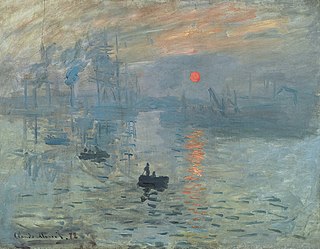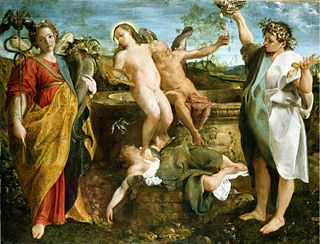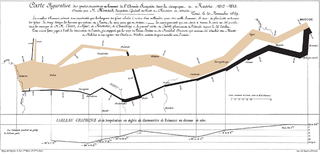 W
WAnthropology of art is a sub-field in social anthropology dedicated to the study of art in different cultural contexts. The anthropology of art focuses on historical, economic and aesthetic dimensions in non-Western art forms, including what is known as 'tribal art'.
 W
WAuthenticity in art is manifest in the different ways that a work of art, or an artistic performance, can be considered authentic. The initial distinction is between nominal authenticity and expressive authenticity. In the first sense, nominal authenticity is the correct identification of the author of a work of art; of how closely an actor or an actress interprets a role in a stageplay as written by the playwright; of how well a musician’s performance of an artistic composition corresponds to the composer’s intention; and how closely an objet d’art conforms to the artistic traditions of its genre. In the second sense, expressive authenticity is how much the work of art possesses inherent authority of and about its subject, and how much of the artist’s intent is in the work of art.
 W
WArt historians and philosophers of art have long had classificatory disputes about art regarding whether a particular cultural form or piece of work should be classified as art. Disputes about what does and does not count as art continue to occur today.
 W
WFolk and traditional arts are rooted in and reflective of the cultural life of a community. They encompass the body of expressive culture associated with the fields of folklore and cultural heritage. Tangible folk art includes historic objects which are crafted and used within a traditional community. Intangible folk arts include forms such as music, dance and narrative structures. Each of these arts, both tangible and intangible, was originally developed to address a real need. Once this practical purpose has been lost or forgotten, there is no reason for a further transmission unless the object or action has been associated with meanings beyond its practicality. Folk traditions are shaped by values that are passed from generation to generation, most often within family and community, through demonstration, conversation, and practice.
 W
WThe word ekphrasis, or ecphrasis, comes from the Greek for the description of a work of art produced as a rhetorical exercise, often used in the adjectival form ekphrastic. It is a vivid, often dramatic, verbal description of a visual work of art, either real or imagined. In ancient times, it referred to a description of any thing, person, or experience. The word comes from the Greek ἐκ ek and φράσις phrásis, 'out' and 'speak' respectively, and the verb ἐκφράζειν ekphrázein, "to proclaim or call an inanimate object by name".
 W
WIn mathematics, two quantities are in the golden ratio if their ratio is the same as the ratio of their sum to the larger of the two quantities. Expressed algebraically, for quantities a and b with a > b > 0,
 W
WA hierarchy of genres is any formalization which ranks different genres in an art form in terms of their prestige and cultural value.
 W
WIn mathematics, the plastic number ρ is a mathematical constant which is the unique real solution of the cubic equation
 W
WAlbert Plécy was a French journalist, painter, photographer and filmmaker, specialist in the language of the image. He was, along with Jacques Henri Lartigue and Raymond Grosset, one of the three emblematic founders of the association of Gens d'images.
 W
WThe psychology of art is an interdisciplinary field that studies the perception, cognition and characteristics of art and its production. For the use of art materials as a form of psychotherapy, see art therapy. The psychology of art is related to architectural psychology and environmental psychology.
 W
WRealism was an artistic movement that emerged in France in the 1840s, around the 1848 Revolution. Realists rejected Romanticism, which had dominated French literature and art since the early 19th century. Realism revolted against the exotic subject matter and the exaggerated emotionalism and drama of the Romantic movement. Instead, it sought to portray real and typical contemporary people and situations with truth and accuracy, and not avoiding unpleasant or sordid aspects of life. The movement aimed to focus on unidealized subjects and events that were previously rejected in art work. Realist works depicted people of all classes in situations that arise in ordinary life, and often reflected the changes brought by the Industrial and Commercial Revolutions. Realism was primarily concerned with how things appeared to the eye, rather than containing ideal representations of the world. The popularity of such "realistic" works grew with the introduction of photography—a new visual source that created a desire for people to produce representations which look objectively real.
 W
WRealism, sometimes called naturalism, in the arts is generally the attempt to represent subject matter truthfully, without artificiality and avoiding speculative fiction and supernatural elements. Realism has been prevalent in the arts at many periods, and can be in large part a matter of technique and training, and the avoidance of stylization.
 W
WIn the visual arts, style is a "...distinctive manner which permits the grouping of works into related categories" or "...any distinctive, and therefore recognizable, way in which an act is performed or an artifact made or ought to be performed and made". It refers to the visual appearance of a work of art that relates it to other works by the same artist or one from the same period, training, location, "school", art movement or archaeological culture: "The notion of style has long been the art historian's principal mode of classifying works of art. By style he selects and shapes the history of art".
 W
WUt pictura poesis is a Latin phrase literally meaning "as is painting so is poetry". The statement occurs most famously in Horace's Ars Poetica, near the end, immediately after another famous quotation, "bonus dormitat Homerus", or "even Homer nods" :Poetry resembles painting. Some works will captivate you when you stand very close to them and others if you are at a greater distance. This one prefers a darker vantage point, that one wants to be seen in the light since it feels no terror before the penetrating judgment of the critic. This pleases only once, that will give pleasure even if we go back to it ten times over.
 W
WVisual literacy is the ability to interpret, negotiate, and make meaning from information presented in the form of an image, extending the meaning of literacy, which commonly signifies interpretation of a written or printed text. Visual literacy is based on the idea that pictures can be "read" and that meaning can be through a process of reading.